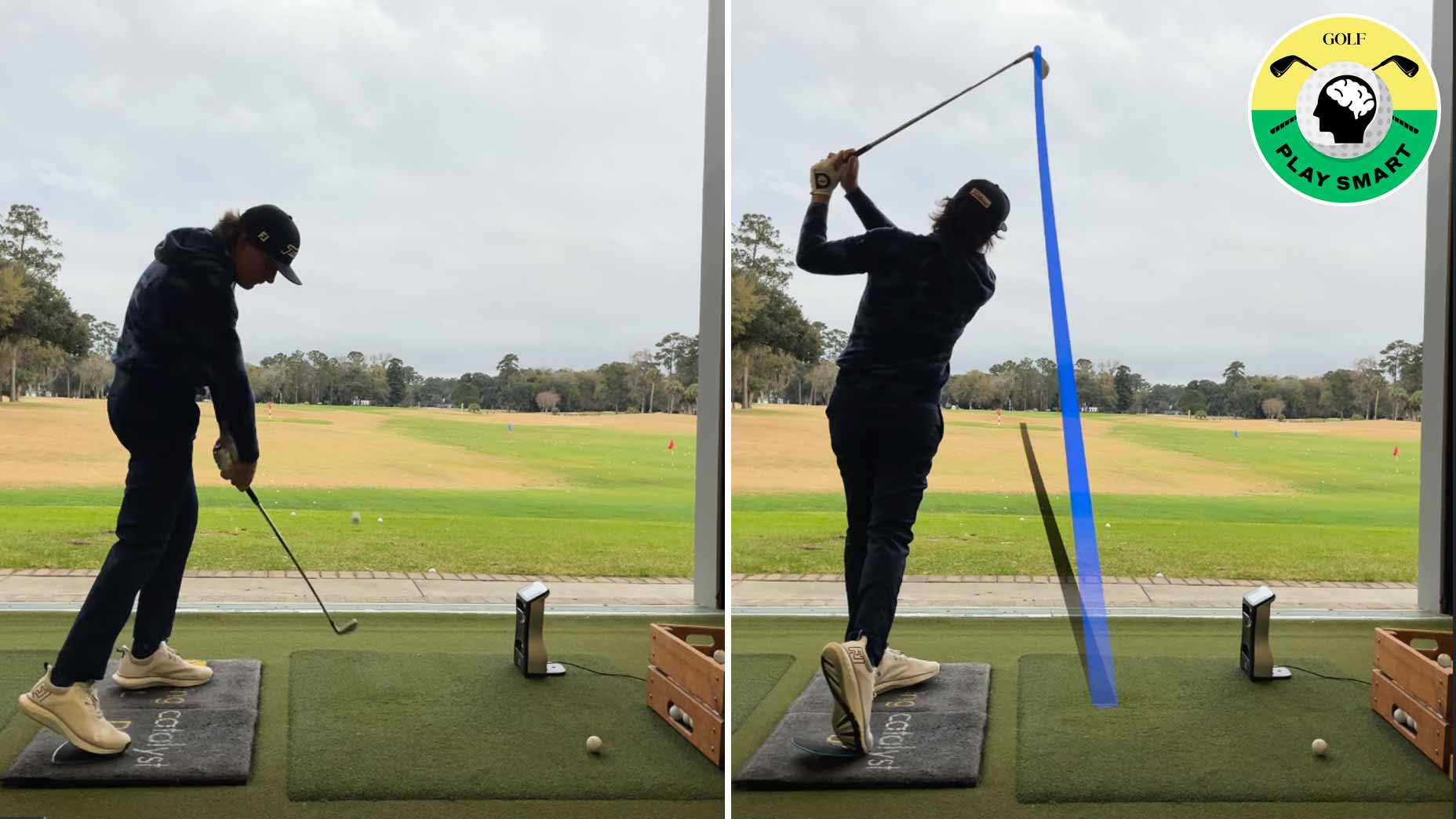Welcome to Shaving Strokes, a new GOLF.com series in which we’re sharing improvements, learnings and takeaways from amateur golfers just like you — including some of the speed bumps and challenges they faced along the way.
Wedge shots are some of the hardest to hit in golf, especially if you’re a mid-handicapper like I am.
With varying degrees of club choices, not only can it be difficult to select the best option, but executing the shot you want is even trickier. After all, there’s a reason why so many golfers either skull or chunk their wedge shots — because they don’t often practice them, which leads to hitting and hoping out on the golf course.
But it’s time to take more control of your wedge play, which will help shave strokes when you’re within striking distance of the green.
To accomplish that, GOLF Top 100 Teacher Brech Spradley provides a “glue” drill that leads to pro-level results, helping the ball “stick” to your club for more control. Spradley provides the details in the video below.
This ‘glue’ drill will help you flush wedge shots
“Pros are really good at coming through with their wedges, staying connected, and keeping the pivot moving,” Spradley says. “They can hit that mid-flighted stop shot really well.”
While there’s no guaranteeing you’ll be able to pull of that type of shot immediately — so set realistic expectations for yourself — Spradley does provide a fun drill to help amateur players feel that pro-level sensation.
“You have to use your core and pivot to do this,” he says.
“I’m going to take a sand wedge out and come to a good impact position. I want to feel most of my pressure left [for right-handed players, the lead leg], about 85%. I have some connection with my upper arms to my body, I’ve got my hands forward, and my body turned open.”
Instead of taking a swing at the ball, Spradley says to use the clubface to fling it upward — almost as if you’re practicing a wrist shot in hockey.
Phil Mickelson: Nail these 3 things for a more consistent short gameBy: Phil Mickelson
“I want to put the club right up against the ball and get the feeling like I’m going to fling the ball. I call that gluing the ball on the face, as you can see how I threw the ball out there,” Spradley explains. “I had to use my body to do that.”
Since many amateurs tend to have issues with scooping the club beneath the ball on their wedge shots, leading to inconsistent results, this drill helps avoid those frustrating wedge shots that land just a few feet in front of you.
“As we freeze the body and throw our hands at it, stalling out like a lot of golfers tend to fight, then the club would scoop right under the ball. [Unfortunately], that’s how a lot of players hit wedges,” he says. “So I want you to feel like you’re throwing the ball, and then we’ll hit a shot with that sensation of keeping the body moving.”
Spradley hits a mid-flighted wedge shot that keeps a low trajectory with some backspin — allowing for some stickiness as it hits the putting surface. This is how he says every player should be practicing with their wedges.
A few basic reminders from Spradley when using this drill:
1. Ball position should be slightly back in the stance, with the hands slightly forward of the ball at address.
2. Weight distribution should be about 60/40 at setup, favoring the lead leg.
3. Focus on an in-to-out club path in order to hit a draw.
4. Hit with plenty of shaft lean, helping you get a lower dynamic of club loft, while keeping your launch angle down.
5. No stalling! Keep your pivot moving to feel that low-draw “glue” feel.
“See if you can fling the ball,” adds Spradley. “You’ve got to keep everything moving, so nothing can stall out, allowing the ball to stay glued on the face. That’s a great feeling for how you want to hit your wedges.”











